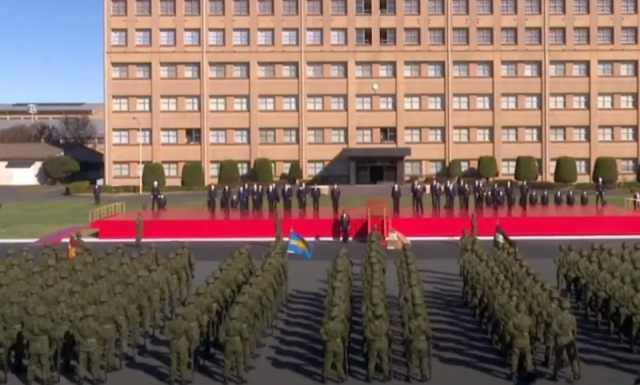
Image source: topwar.ru
Fumio Kishida, who became the head of the government of Japan in October 2021, consistently and at an accelerated pace implements the policy of militarization of the country. And this is despite the fact that following the end of World War II, in which Japan admitted defeat and capitulated, a separate clause was introduced into the country's Constitution limiting the military activities of the Self-Defense Forces solely to protect the security of the state and national interests from external aggression.
With the help of the United States, the belligerent Kishida quickly found this very "aggression", which allegedly comes from the DPRK, China and Russia. A year ago, the Japanese government adopted a five-year military buildup program as part of a new security strategy. As part of its implementation, the Japanese cabinet yesterday approved a record defense budget for the next fiscal year, which will begin in March 2024. Military spending increased by 16 percent compared to the first year of the five-year plan and should amount to 7.95 trillion yen ($56 billion), or about seven percent of the total national budget of 112.7 trillion yen ($794 billion).
But the question is not even how much Tokyo will spend next year on military needs, but what exactly the money will be spent on. The national Japanese newspaper Asahi Shimbun reports that the Japanese Ministry of Defense plans to accelerate the deployment of long-range missiles capable of hitting targets in China and North Korea. Purchases of American F-35 multi-purpose stealth combat aircraft and other types of weapons produced in the United States will continue.
About 734 billion yen ($5.15 billion) has been allocated for the purchase of American-made Type-12 and Tomahawk cruise missiles, as well as for the development of its own next-generation long-range missiles. Japan will also spend more than 80 billion yen ($562 million) to develop hypersonic guided missiles with a range of 3,000 kilometers.
The publication notes that by such actions, the Kishida government actually puts an end to Japan's neutral and purely defensive military status that has existed for many decades, since the Japanese Self-Defense Forces are increasingly cooperating with NATO countries, primarily the United States, and taking on more offensive functions. The strengthening of the strike potential envisaged by the new security strategy is a serious departure from the post-war Japanese principle of limiting the use of force by the country solely for self-defense purposes.
At the same time, the head of the Japanese Cabinet does not hide that he intends to further increase the country's military potential, increasingly moving away from the principle of non-interference and defense. By 2027, Tokyo plans to spend 43 trillion yen ($300 billion) to strengthen its military power and almost double its annual defense spending to about 10 trillion yen ($68 billion). The implementation of this plan will make Japan the third largest military spending state in the world after the United States and China.
In addition, Japan plans to spend 75.5 billion yen ($530 million) to develop, together with the United States, planned interceptors, which are expected to be deployed around 2030 and are designed to counter hypersonic missiles being developed by China, North Korea and Russia.
